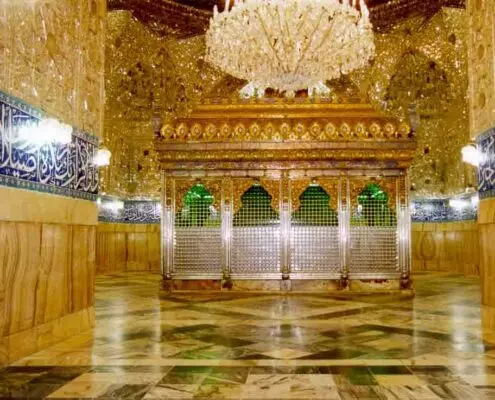The city of Qom is a special place in Shi’a Islam. At its heart lies the revered shrine of Fatimah bint Musa, sister of Imam Ali ibn Musa Reza, also known as Imam Reza. This sacred site draws millions of pilgrims from Iran and worldwide every year, seeking spiritual solace and connection. From the grandeur of the Shrine of Fatima Masumeh to the mystical allure of Jamkaran Mosque, each edifice represents centuries of faith and piety.
Moreover, Qom is a distinguished Shia Islamic scholarship and religious learning center. This esteemed city is renowned for its seminaries and institutions, attracting scholars and students from the Shia Muslim world. The intricate nuances of Shia theology, jurisprudence, and spirituality are meticulously studied and expounded upon in Qom. As a hub of Shia Islamic scholarship, Qom holds a revered place in the hearts of believers, embodying a legacy of intellectual pursuit and devotion that resonates throughout the Shia Muslim community.
Join us on a journey through the streets of Qom, where the echoes of centuries past resound with the timeless echoes of faith and devotion.
If you’re considering traveling for Ziyarat in Iran, explore Visit Our Iran’s ziyarat tour packages page for comprehensive pilgrimage experiences.
Accommodation in Qom
Securing suitable accommodation is essential for a comfortable stay when planning your trip to Qom. Parsia Hotel is a prime choice, offering modern amenities and a serene ambiance to unwind after a day of exploration. Its proximity to the city’s religious sites makes it a convenient option for pilgrims eager to immerse themselves in the spiritual atmosphere of Qom.
Meanwhile, Olimpic Hotel suits budget-conscious travelers with its affordable rates and cozy accommodations. Despite its economical pricing, Olimpic Hotel keeps its quality high, ensuring guests a pleasant and hassle-free stay. Whether you seek luxury or affordability, both Parsia Hotel and Olimpic Hotel provide excellent accommodation options, ensuring your journey to Qom is as comfortable and enjoyable as possible.
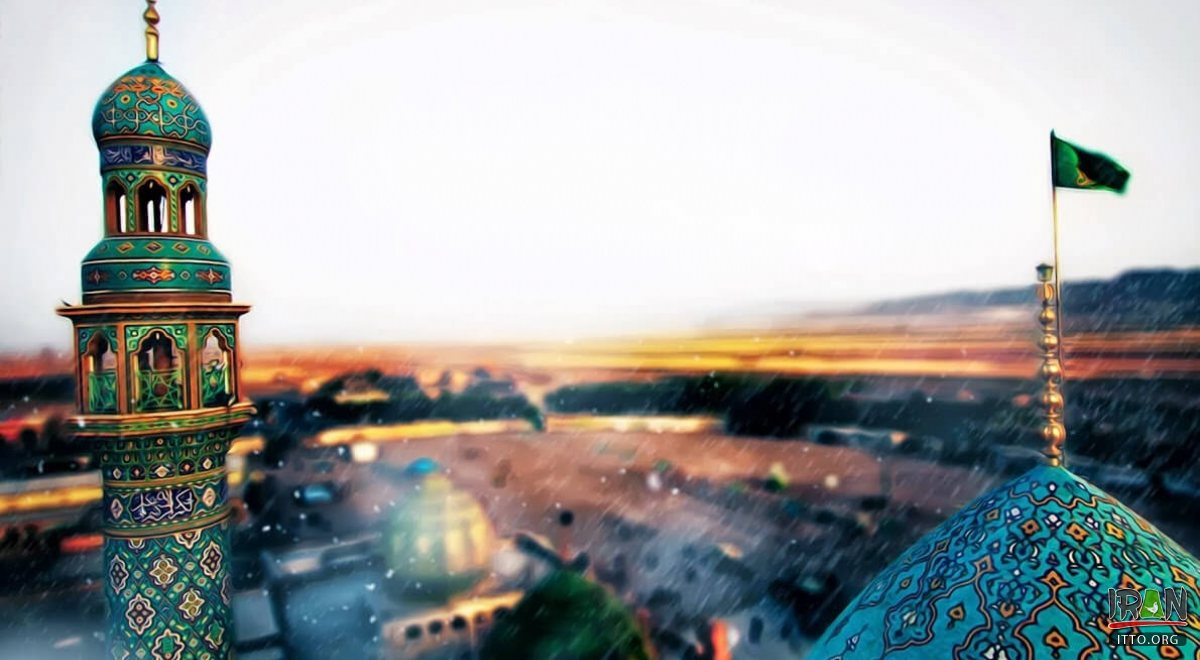
Shrine of Fatima Masumeh
As you begin your pilgrimage to Qom, one of the most sacred destinations you’ll encounter is the Shrine of Fatima Masumeh, the sister of Imam Reza. This revered site holds immense significance in Shia Islam, drawing pilgrims worldwide. When you approach the shrine, you’ll be struck by its magnificent architecture, adorned with intricate tilework and delicate calligraphy, reflecting the beauty of Persian craftsmanship. Stepping inside, you’ll feel a sense of peace and tranquility wash over you, enveloping you in the spiritual aura of the shrine.
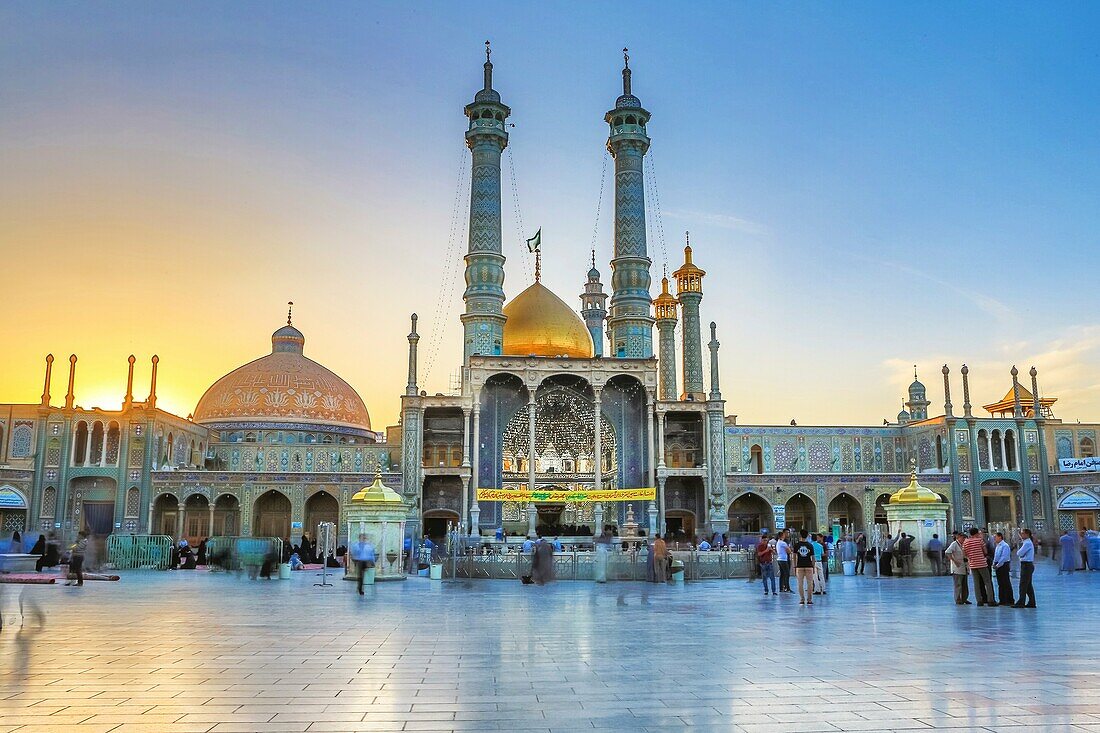
After Fatima Masumeh’s death in 816, scholars flocked to Qom, establishing it as a center for religious learning. The shrine’s architecture evolved over centuries, starting with a simple bamboo canopy covering Fatima Masumeh’s tomb, later replaced by a durable domed building.
During the Safavid period, Tajlu Khanum, wife of Shah Isma’il I, led efforts to enhance the shrine’s surroundings, adding minarets and embellishing the tomb chamber. Safavid royal women sought refuge in Qom during times of conflict, contributing exquisite fabrics and items to the shrine. Although Shah Abbas I didn’t patronize the shrine extensively, he donated books to its seminary library.
In modern times, Fatima Masumeh Shrine gained prominence during the Islamic Revolution, with Qom being hailed as its birthplace. Ayatollah Khomeini, the leader of the Islamic Revolution, studied and lived in Qom, utilizing its cultural symbols, including the shrine, to unite Iranians. Images of the shrine adorned posters, currency, and stamps during the revolution. Ayatollah Khomeini oversaw the expansion of the shrine, accommodating more pilgrims, and his mausoleum echoes the architectural elements of Fatima Masumeh’s Shrine, notably the golden dome.
Fatima Masumeh Shrine currently has a stunning architectural ensemble that captivates visitors from far and wide. Three majestic domes, each with its own unique charm, adorn this sacred site: the Old Dome, the New Dome (also known as the Atabaki Dome), and the Saheb Al-Zaman Dome.
In the northern part of the shrine, the Old Dome stands tall, offering a magnificent sight with its four exquisite verandas. These verandas add to the grandeur of the shrine, welcoming pilgrims with their timeless beauty.
The New Dome, also known as the Atabaki Dome, is another striking feature of the shrine. Its four verandas, facing north, east, west, and south, lead to separate entrances, creating a sense of grandeur and splendor. The intricate architecture of these verandas, a testament to human craftsmanship, took nearly eight years to complete.
A testament to modern craftsmanship, the Saheb Al-Zaman Dome, the newest addition to the shrine, was constructed between 2002 and 2005. Its surrounding walls are adorned with Quranic inscriptions crafted from brick and white cement, adding an aura of sanctity to the shrine.
As you explore the shrine, you’ll be mesmerized by the minarets flanking the golden dome and other parts of the structure. Carved with holy names and words in the Kofi language, these minarets exude a sense of reverence and devotion, inviting visitors to experience the spiritual ambiance of the Fatima Masumeh Shrine.
Acts of Reverence at Fatima Masumeh Shrine
Ziyarat is a profound spiritual journey steeped in tradition and reverence, centered around the revered shrine of Fatima Masumeh. Before entering the shrine, it is customary for pilgrims to perform a ghusl, a ritual purification bath that symbolizes the cleansing of the soul before approaching the holy site. With hearts brimming with devotion, pilgrims offer prayers and supplications, seeking blessings and guidance from Fatima Masumeh.
Dua is integral to the pilgrim experience in Qom, serving as a direct channel for communication with the divine. Pilgrims approach the shrine with profound reverence and humility, pouring their hearts into reciting prayers in various languages, beseeching Allah for forgiveness, guidance, and fulfillment of their wishes and needs.
Whether softly whispered in quiet reverence or fervently recited amidst the bustling crowds, these prayers carry the hopes, dreams, and aspirations of pilgrims who have traveled far and wide to seek solace and spiritual enlightenment.
At the Fatima Masumeh Shrine, special prayers hold a significant place in the hearts of pilgrims. These prayers, offered with reverence and devotion, are integral to the ziyarat experience. Pilgrims engage in various acts of worship, seeking the blessings and intercession of Imam Reza.
As part of the ziyarat culture, wearing a chador, a traditional garment, is considered essential for women. The chador symbolizes humility and modesty, allowing pilgrims to fully immerse themselves in the spiritual experience. Wrapped in the comforting embrace of their chadors, pilgrims experience a journey of introspection and prayer, connecting with the divine presence that permeates the sacred space of the shrine.
Through these acts of devotion, pilgrims create a deeper spiritual connection with Imam Reza and experience a profound sense of peace and tranquility within the shrine’s sacred precincts.
Jamkaran Mosque
Jamkaran Mosque, located six kilometers east of Qom, Iran, holds a deep spiritual significance, tracing back to a legendary encounter in 984 C.E. According to tradition, Sheikh Hassan ibn Muthlih Jamkarani met the 12th Imam and Prophet Al-Khidr, who instructed the construction of a mosque on this noble land. Over time, the mosque’s reputation grew, attracting pilgrims, especially on Tuesday nights, believed to be when requests are heard by the Imam. Pilgrims gather around the “well of requests,” tying strings with their wishes, hoping for divine intervention.
Tuesday nights witness a vibrant atmosphere like a large gathering, where vendors set up stalls, families picnic, and tens of thousands await the Imam’s response. The mosque’s kitchen serves free meals to thousands of needy individuals on these evenings. The government has contributed funds to expand the mosque complex, aiming to accommodate the increasing number of worshippers. Despite its popularity, foreign press access to the mosque has been restricted in recent years due to sensitivity.
The “Well of Requests” outside the mosque invites believers to drop letters and requests, seeking the Imam’s intercession. However, this belief lacks official approval from religious leaders. Tuesday nights are particularly auspicious for Shia Muslims, and they are dedicated to prayers and requests to Imam Zaman. The mosque’s location in Jamkaran Village, southeast of Qom, allows easy access for visitors, either through Payambar Azm Boulevard or Qom-Kashan Road.

Qom Seminary: Center of Shia Islamic Scholarship
In the heart of Qom, amidst the spiritual fervor of this religious city, lies the esteemed Qom Seminary. It is a beacon of Islamic scholarship and learning. Aspiring scholars worldwide converge to deepen their understanding of Islamic jurisprudence, theology, and spirituality. For Muslims, especially Shia Muslims, the seminary represents a sacred institution where the principles of faith are preserved, disseminated, and perpetuated.
It is a place where knowledge seekers can deepen their understanding of Islamic jurisprudence, theology, and spirituality, guided by the wisdom of learned scholars. The Qom Seminary symbolizes the enduring commitment to preserving Islam’s rich heritage, fostering intellectual growth, and nurturing a deep connection to the Divine. Its significance extends beyond the boundaries of Qom, resonating with Muslims worldwide who look to it as a source of inspiration, guidance, and spiritual enrichment in their journey of faith.
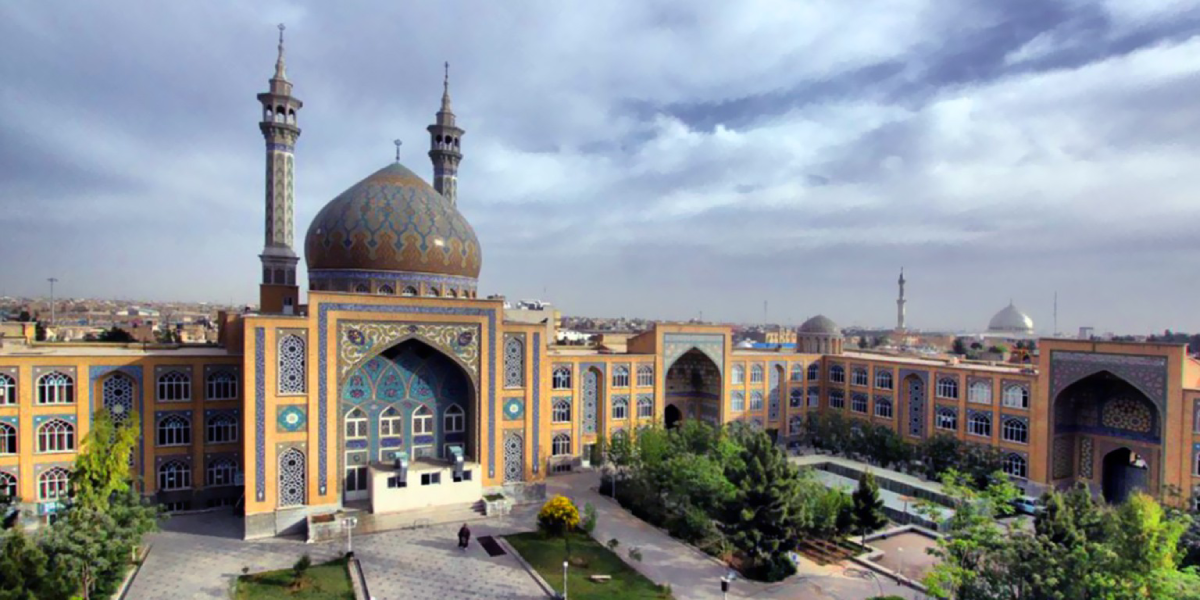
City Exploration
Outside the holy shrine, bustling bazaars and streets offer vibrant sights, sounds, and smells. Take the time to wander through the market stalls, where you can purchase souvenirs, handicrafts, and religious artifacts to commemorate your visit. Whether you’re a tourist or a pilgrim, visiting the Shrine of Fatima Masumeh is a profound and unforgettable experience that will leave a lasting impression on your heart and soul.
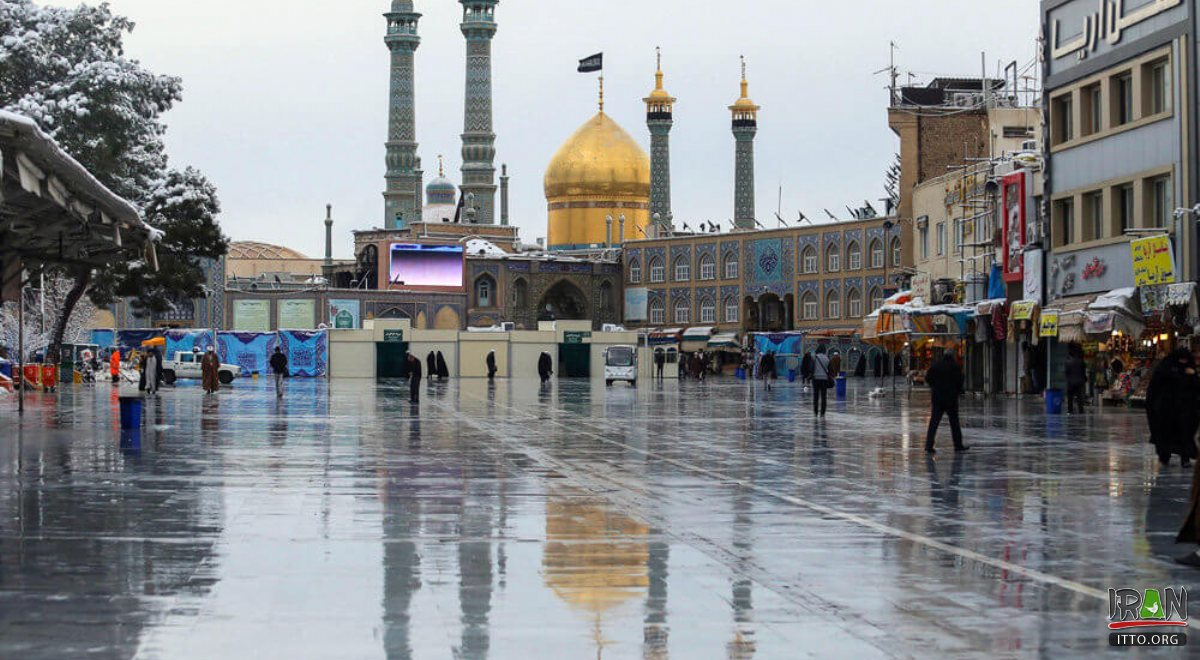
You can stroll along the banks of the Qom River or marvel at the architecture of its historic buildings; every corner of the city offers a glimpse into its storied past. As you immerse yourself in Qom, you’ll discover a city steeped in history and tradition. A vibrant blend of Persian and Islamic influences, reflected in the city’s architecture, cuisine, and customs, makes Qom’s culture and history a captivating journey of discovery for every traveler and pilgrim alike.
To gain a comprehensive understanding of ziyarat (pilgrimage) in Iran, we invite you to explore our article “Iran Ziyarat Guide: Shrines in Iran“.
In Conclusion
As you prepare for your journey to Qom, let your heart be filled with anticipation and reverence for the sacred sites that await you. From the moment you set foot in this spiritual city, you will be enveloped in the warmth of its hospitality and the depth of its devotion.
Visit Our Iran invites you to explore a journey of spiritual enlightenment with our exclusive ziyarat packages. Immerse yourself in the sacred atmosphere of Qom, Mashhad, and other revered destinations as you embark on a pilgrimage. Our meticulously crafted itineraries cater to the needs of every pilgrim, offering seamless travel arrangements, comfortable accommodations, and guided tours of the most significant religious sites.
Contact us today to book your pilgrimage and experience a transformative journey of faith and devotion. May your pilgrimage be enlightened, and may your soul find solace in the embrace of Qom’s holy land.
